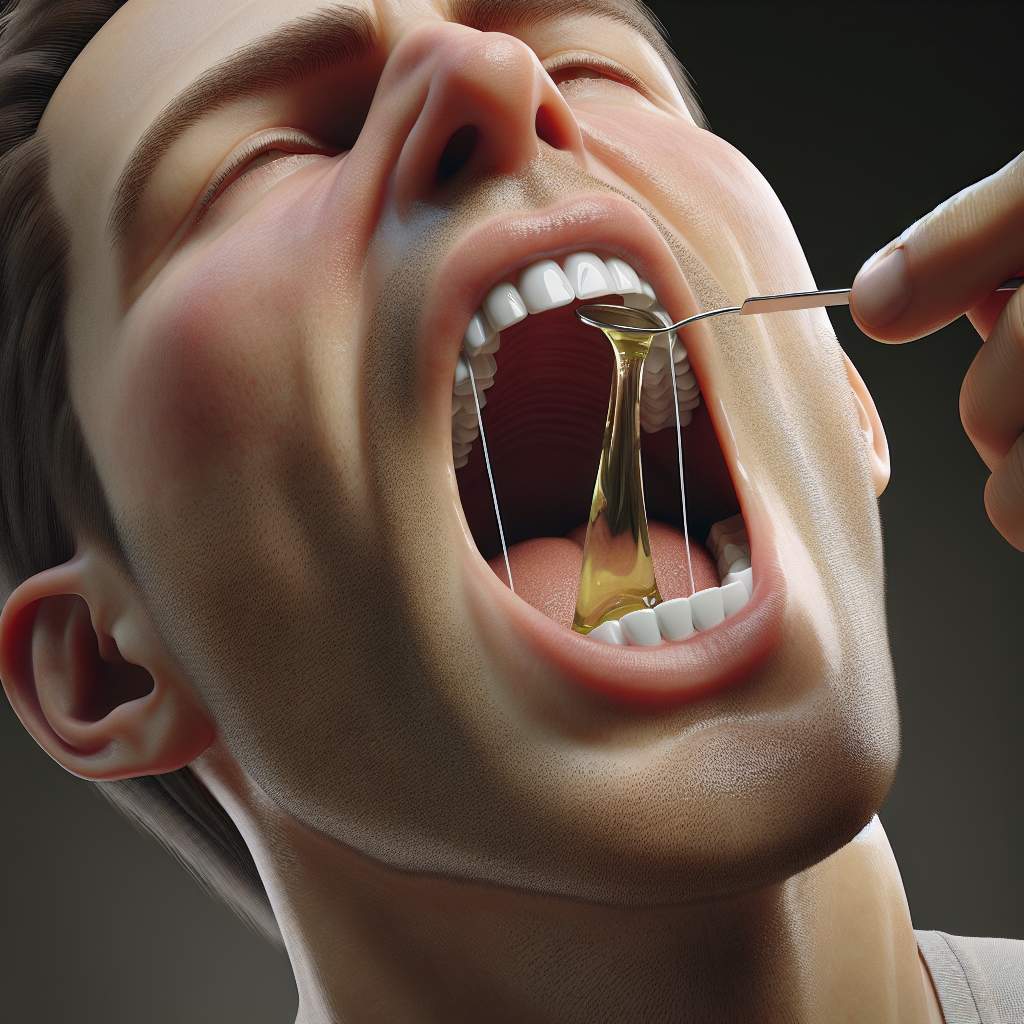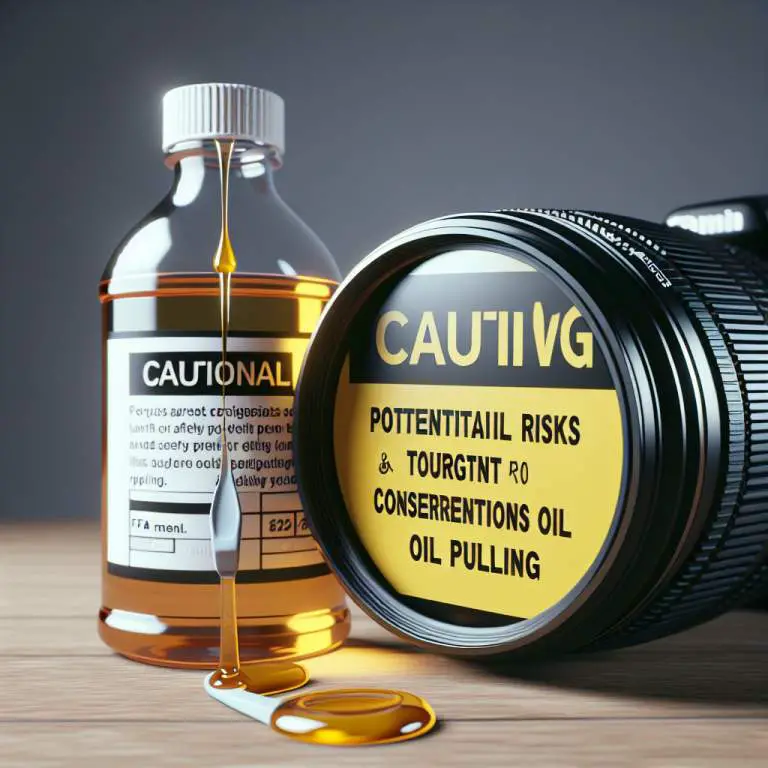How effective is oil pulling for dental health and whitening?
Oil pulling can be good for your dental health by reducing bacteria and plaque in your mouth, which might help with gum health and bad breath. However, when it comes to whitening teeth, the evidence is less clear. Some people say their teeth look brighter, but there’s not much scientific proof that oil pulling makes a big difference in tooth color. So, while it may help keep your mouth clean, don’t expect dramatic whitening results.

How effective is oil pulling for improving overall dental health?
Oil pulling is a traditional practice that many believe can improve dental health. It involves swishing oil around in your mouth to remove bacteria and promote oral hygiene. Studies have shown that oil pulling can reduce the amount of harmful bacteria in the mouth, which is a key factor in improving dental health.
By reducing bacteria, oil pulling can help prevent cavities and reduce gum inflammation. This can lead to healthier gums and teeth. However, it’s important to remember that oil pulling should not replace regular dental care practices like brushing and flossing.
What are the scientifically proven benefits of oil pulling on oral hygiene?
Scientific research has identified several benefits of oil pulling for oral hygiene. One of the main benefits is its ability to reduce the presence of harmful bacteria in the mouth. Specifically, oil pulling has been found to decrease the levels of Streptococcus mutans, a major bacteria responsible for tooth decay.
Additionally, oil pulling has been shown to reduce bad breath, which is often caused by the presence of bacteria in the mouth. It can also help in reducing gum inflammation, leading to healthier gums. These benefits contribute to the overall improvement of oral hygiene when oil pulling is practiced regularly.
Can oil pulling contribute to teeth whitening, and how does it compare to traditional methods?
Many people who practice oil pulling report that it helps in whitening their teeth. The theory is that oil pulling removes stains and bacteria from the teeth, leading to a brighter smile. However, scientific evidence supporting oil pulling as a teeth whitening method is limited.
When compared to traditional teeth whitening methods, such as bleaching or using whitening strips, oil pulling is less aggressive and does not use chemicals. This makes it a safer, natural alternative for those looking for a mild whitening effect. However, for more dramatic whitening results, traditional methods may be more effective.
What types of oil are most effective for oil pulling, and why?
The most commonly used oils for oil pulling are coconut oil, sesame oil, and sunflower oil. Coconut oil is particularly popular due to its pleasant taste and high lauric acid content, which is known for its antimicrobial properties. This makes it effective in killing harmful bacteria in the mouth.
Sesame oil is another traditional choice that has been used for centuries. It is rich in antioxidants, which can help in reducing inflammation in the gums. Sunflower oil is also used, but it’s less popular compared to coconut and sesame oils. Ultimately, the effectiveness of oil pulling may depend on personal preference and how consistently the practice is performed.
| Benefit | Effectiveness | Notes |
|---|---|---|
| Reduces Bacteria | High | Oil pulling can lower the number of harmful bacteria in your mouth. |
| Reduces Plaque and Gingivitis | Medium to High | Regular oil pulling may help reduce plaque and signs of gingivitis. |
| Improves Breath | Medium | By reducing bacteria, oil pulling can lead to fresher breath. |
| Whitens Teeth | Low to Medium | Some people report whiter teeth, but results can vary. |
| Moisturizes Lips and Mouth | High | Oil can help keep your mouth and lips from getting dry. |
| Overall Oral Health | Medium to High | Can be a good addition to regular dental care, but should not replace brushing and flossing. |
How should one properly perform oil pulling for maximum benefits?
To do oil pulling the right way, you should choose a high-quality oil like coconut, sesame, or sunflower oil. Start with a tablespoon of oil in your mouth first thing in the morning before you eat or drink anything. Swish the oil around your mouth, pulling it through your teeth and around your gums for about 15 to 20 minutes. It’s important not to swallow the oil since it collects bacteria and toxins from your mouth.
After swishing, spit the oil into a trash can to avoid clogging your sink. Rinse your mouth well with warm water, and you can even use salt water for an extra clean feeling. Finally, brush your teeth as usual. Doing this regularly can help improve your oral health. Remember, consistency is key to seeing benefits from oil pulling.
Are there any risks or side effects associated with oil pulling?
Oil pulling is generally safe for most people, but there are a few things to keep in mind. Some might experience a gag reflex or nausea, especially when starting out. It’s important to swish gently and maybe use less oil if you’re feeling uncomfortable. Also, make sure not to swallow the oil because it contains bacteria and toxins pulled from your mouth.
There have been rare cases of lipoid pneumonia, which happens when oil is accidentally inhaled into the lungs. To avoid this, don’t tilt your head back too far while swishing. If you have any dental issues, like loose fillings or crowns, oil pulling could potentially make them worse, so it’s a good idea to check with your dentist first.
How long does it take to see results from oil pulling for dental health and whitening?
Results from oil pulling can vary from person to person. Some might notice improvements in their oral health, like fresher breath and healthier gums, within a week or two. However, for others, it might take a bit longer to see noticeable changes. Consistency is crucial, so make sure to keep up with the routine every day.
When it comes to teeth whitening, oil pulling can help remove some surface stains, making your teeth appear brighter over time. But remember, it’s not an instant solution and won’t work the same way as professional teeth whitening treatments. For the best results, combine oil pulling with good oral hygiene practices, like regular brushing and flossing.
Final Thoughts
Oil pulling can be a beneficial addition to your oral hygiene routine. It’s a natural method that can help improve your dental health and even whiten your teeth over time. Remember to do it correctly and consistently for maximum benefits. Choose a high-quality oil, swish it around your mouth for 15 to 20 minutes, and then brush your teeth.
While oil pulling is safe for most people, be aware of potential risks and side effects. If you have any concerns or dental issues, it’s always a good idea to talk to your dentist before starting. With patience and regular practice, you might just see a healthier, brighter smile.







